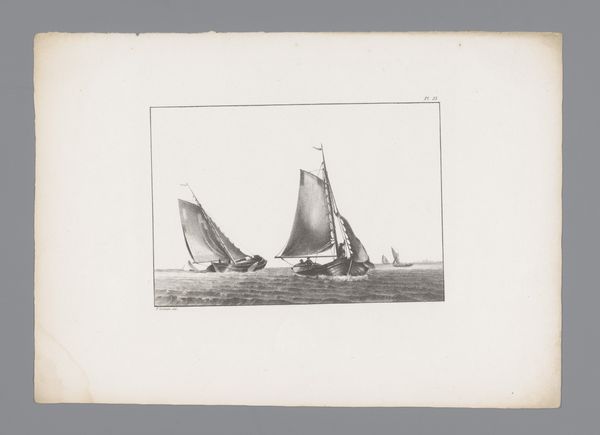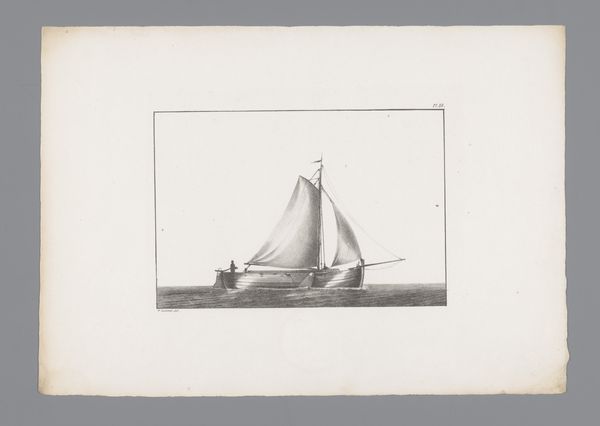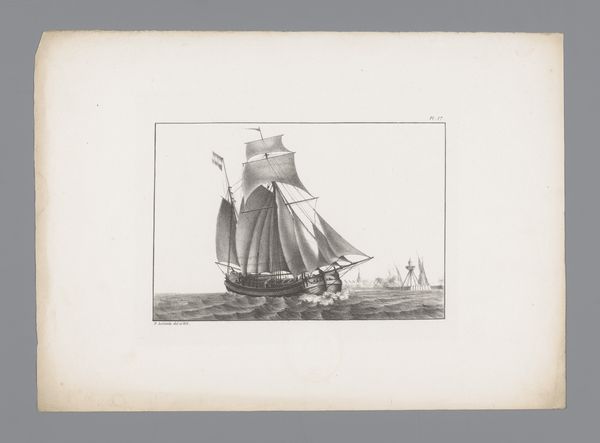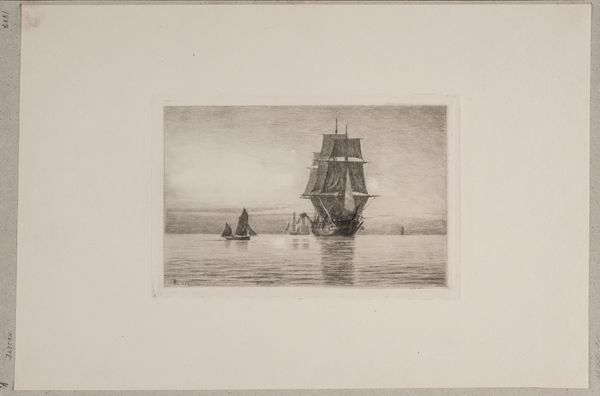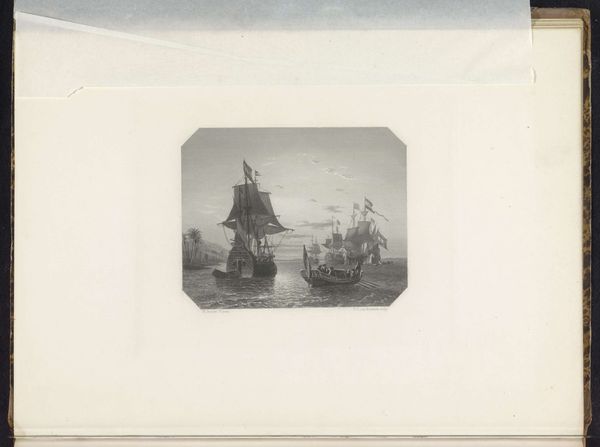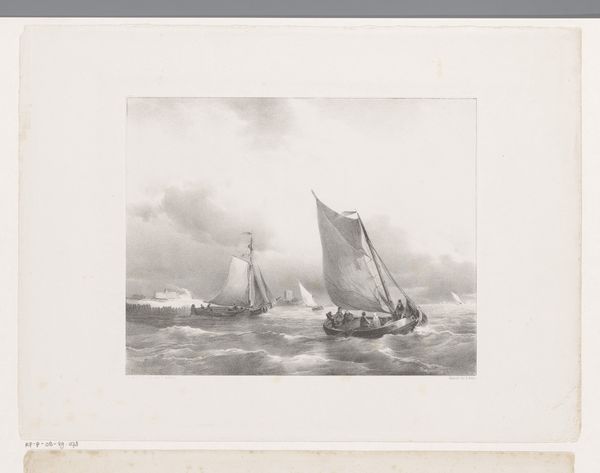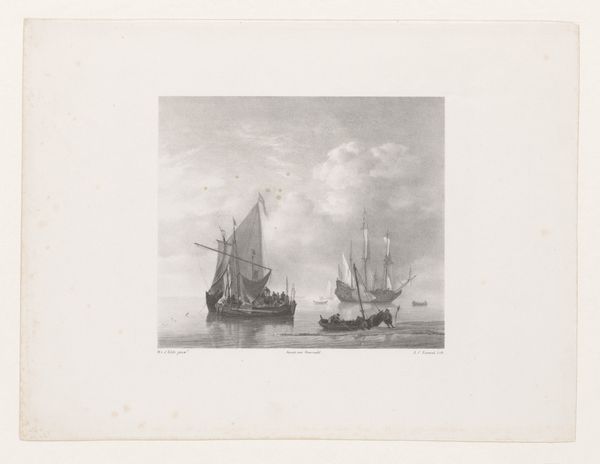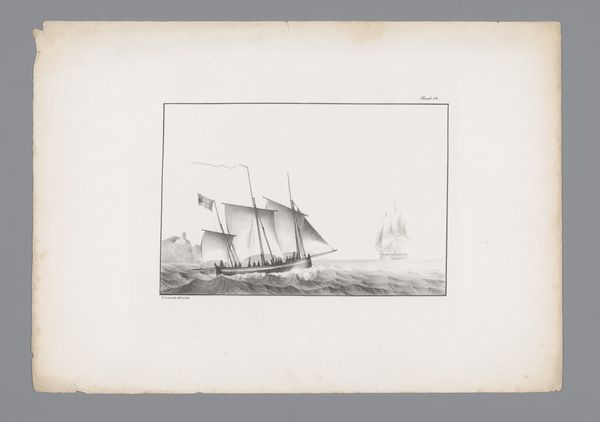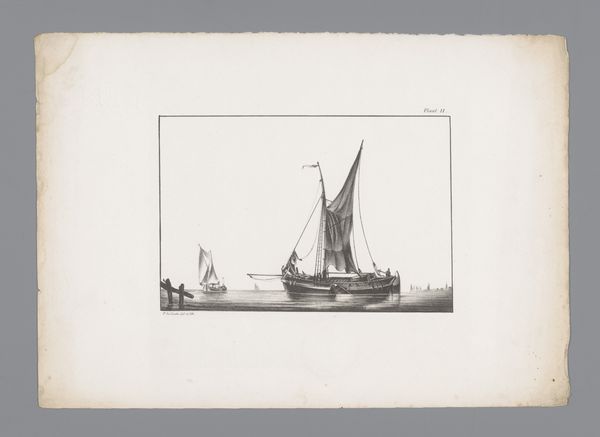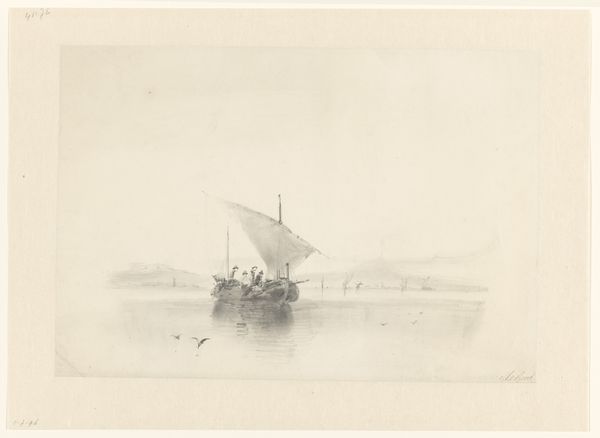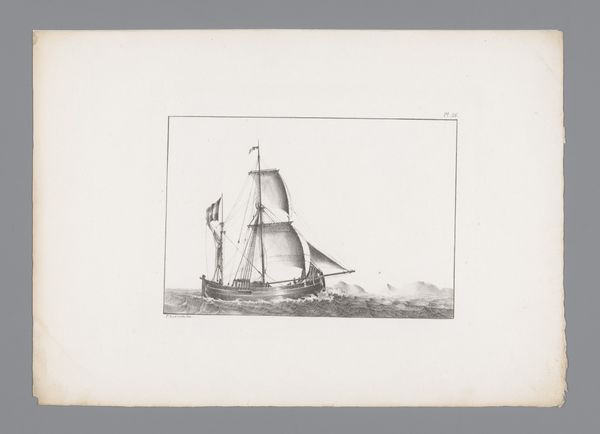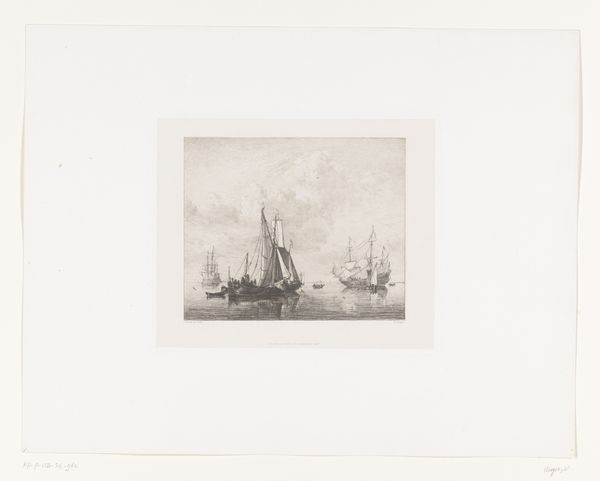
Dimensions: height 180 mm, width 235 mm
Copyright: Rijks Museum: Open Domain
Curator: Here we have Willem Steelink's "Herring Fishery in the 12th Century," created between 1865 and 1870 using ink and charcoal. Editor: It’s quite atmospheric, wouldn’t you agree? The monochrome palette gives it a timeless quality, and the way the light catches the sails is captivating. There is a great compositional rhythm. Curator: Absolutely. It reflects the prevailing romantic interest in the past. Steelink positions the common occupation of fishing in this rather heroic light. It really plays into a particular nationalistic narrative of Dutch maritime power. Editor: Tell me more about that visual construction, because what grabs me is the formal contrast: the detail and solidity of the ships closer to us, against a very misty, indistinct horizon and the ghostly ship at the center. The ships look ancient to my modern eyes. Curator: Indeed. During this time, representations of maritime life often served to reinforce notions of national identity. This image highlights the hardworking nature of the Dutch fisherman, their centrality to the Dutch economy at that time, and a legacy to be proud of. It's important to recognize the selective and often romanticized view of history being presented. Editor: So this idealized vision…it's powerful in the textures, like you mentioned, with such a range of mark making across paper. You can almost feel the weight of the nets and the rough texture of the sails against the flat calm water. The figures almost fade away into the distance. Curator: Exactly. It presents this view as almost inherent to Dutch identity itself. Though, one might wonder, whose perspective does this narrative really serve, and whose stories might be absent or romanticized in this rendition? It reflects power relations of the period. Editor: You’ve certainly given me a different way to consider this piece! Beyond the purely visual impact, it really demonstrates art’s function to build particular socio-political mythologies. I suppose you can’t escape those narratives once the image becomes circulated into a culture. Curator: Precisely. And analyzing art in its historical context encourages us to ask those difficult, but important, questions.
Comments
No comments
Be the first to comment and join the conversation on the ultimate creative platform.
